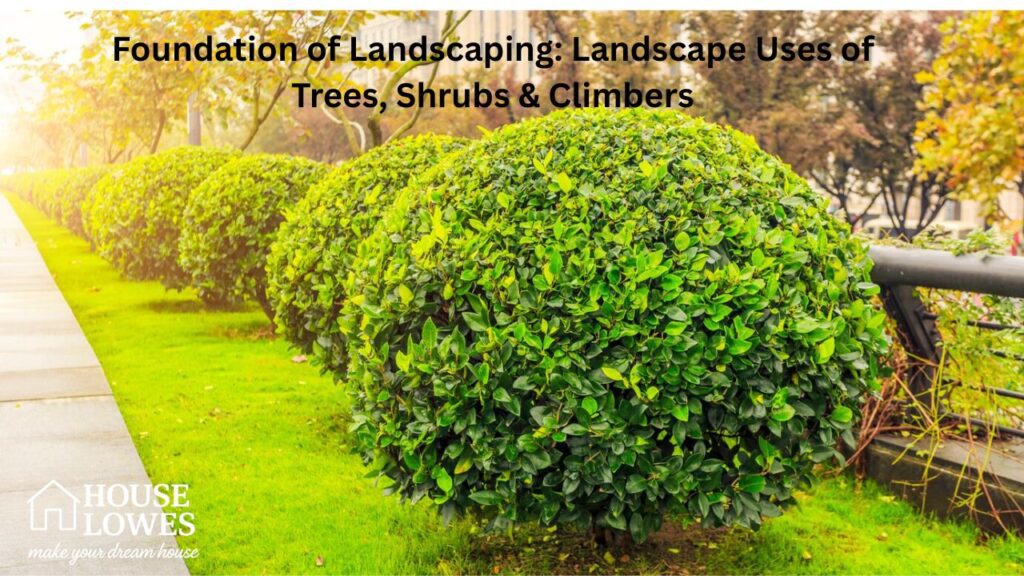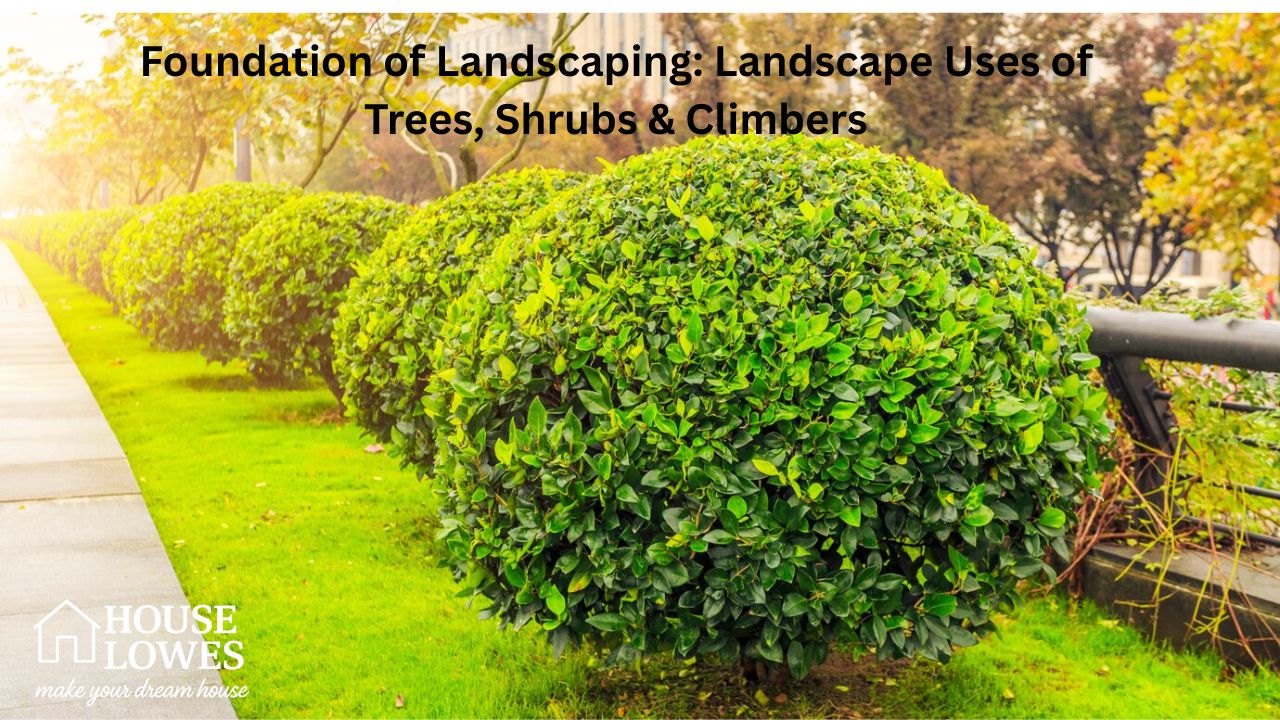Imagine walking into a lush garden. The first thing you notice is probably the grandeur of tall trees swaying in the breeze, the vibrant clusters of shrubs dotting the path, and climbers elegantly draping over arches and fences. Together, these plants don’t just add beauty. They work as a team to create a space that is functional, welcoming, and alive. But how exactly do trees, shrubs, and climbers lay the foundation for great landscape design? Stick around; we’re about to dig in (pun absolutely intended

Trees, Shrubs, and Climbers – Team Players in Your Landscape
Think of trees, shrubs, and climbers as the MVPs (Most Valuable Plants) of landscaping. They each have specific roles, but together they make an unbeatable team. Every landscape uses these plant groups in unique ways, blending their characteristics to build something extraordinary. Whether you’re designing your garden, a community park, or even a schoolyard, these plants aren’t just accessories. They’re essential.
Trees – The Giants That Do It All
Trees set the stage, literally. Not only are they the tallest and most dominant feature in a garden, but they’re also incredibly resourceful. They can shade you during a hot summer barbecue, make your yard feel cooler, and even muffle that annoying noise from passing cars.
But it’s not just about comfort. Trees are smart workers for the environment, too. They absorb carbon dioxide and give us clean oxygen, act as natural windbreaks, and even reduce stormwater runoff. For instance, a single tree can absorb thousands of liters of water each year, saving your garden from becoming a swamp after heavy rains. Pretty cool, right?
Then, there’s the wow-factor. Flowering trees like Gulmohar (with its fiery red blossoms) or Jacaranda (those gorgeous purple blooms) add instant drama. Foliage trees like Chinar or Ficus keep the landscape interesting all year round, even when flowers are off-duty.
Shrubs – The Versatile All-Rounders
Shrubs might not tower over a landscape like trees, but what they lack in height, they more than make up for in personality. Have a bare spot in your garden? Plant shrubs! Need a living hedge instead of a boring concrete fence? Shrubs have you covered!
Shrubs are great multitaskers. They define pathways, fill awkward gaps, and create natural boundaries. But they can also show off some serious flair. Ever seen a flowering Jasmine shrub or bright hibiscus blooms up close? They’re like nature’s version of street art.
Here’s a fun fact for you. Many shrubs are “year-round performers.” Crotons, for example, stay bright and colorful, whatever the season. On the other hand, Bougainvillea shrubs, with their vivid hues, can make any yard look cheerful and festive. And for small spaces, potted shrubs are hardworking heroes. Want to add green to your balcony? Shrubs like Ixora, which thrive in pots, can do wonders.
Climbers – The Artists of Vertical Space
Now, onto climbers – the plant equivalent of acrobats. If you’re short on space or want to maximize walls, fences, or trellises, climbers are the answer. They don’t just save horizontal space; they add height, color, and privacy.
Take Bougainvillea and Morning Glory, for example. These might sound like they belong in poetry, but they do double duty in landscaping. They can spill over fences in a riot of color or wrap around pillars, creating living artworks.
More than just pretty faces, climbers can also solve real-world problems. Need shade on your patio? Add climbers to a pergola. Want to hide an unappealing wall? Guess who can help? That’s right, climbers! Beyond aesthetics, they improve energy efficiency too. By insulating walls, climbers naturally cool down your home. Who needs giant electricity bills when you have nature’s air conditioning, right?
How They Work Together in Design
When you combine trees, shrubs, and climbers, they transform your landscape into a work of art. Picture this. A tall tree like a Neem at the center of your garden, flanked by evergreen shrubs, with a burst of dramatic climbers scaling your fence. It’s like nature composing its own symphony. Trees provide structure, shrubs bring texture, and climbers add movement and softness, weaving everything together.
An example? Think about the use of climbers over schoolyard archways, winding all the way up to meet the shade of nearby trees. Underneath, flowering shrubs frame the pathway, turning a simple entrance into a magical welcome.
Not All Heroes Wear Capes – The Environmental Impact
Sure, we plant trees, shrubs, and climbers for their looks, but did you know they’re also champions for the planet? Trees, for instance, help cool down urban heat islands by reducing surface temperatures by up to 10 degrees. Meanwhile, shrubs stabilize soil, especially on slopes, preventing erosion. And climbers? They’re magnets for pollinators like bees and butterflies, giving back to nature in ways we often overlook.
And there’s more! Trees absorb noise, shrubs create habitats for wildlife, and climbers help create a cooler, quieter, and more private space. It’s clear why landscapes wouldn’t look – or feel – the same without them.
Tips for Getting Started with Your Landscape Dream Team
Now that you know what these plants can do, how do you actually start using them in your own space? Start simple:
- Assess Your Space
Whether it’s your backyard, a community garden, or even a balcony, figure out how much sunlight, shade, and space you’ve got. - Choose the Right Plants
Don’t just pick ones that look nice. Consider native species that thrive naturally in your area. They’ll need less water and care. - Think in Layers
Use tall trees for structure. Add medium-height shrubs for detail. Then, finish it with climbers to soften hard edges or cover bare spaces. - Mix and Match
Combine trees, shrubs, and climbers with different flowering seasons to keep your landscape vibrant throughout the year. - Keep it Low Maintenance
Once you plant, set up simple care routines. Mulching, occasional pruning, and checking for pests go a long way in keeping your plants happy.
FAQs
Q1. What are the best plants for small gardens?
For small gardens, look for compact shrubs like Ixora, dwarf Bougainvillea, or climbers like Morning Glory. They don’t take up much space but offer maximum impact!
Q2. Can climbers damage walls?
Some climbers with woody stems, like Ivy, can cause cracks over long periods. To avoid this, grow climbers with lighter vines, like Rangoon Creeper, using a trellis.
Q3. How do I figure out the right trees for my climate?
Start by researching local native trees. Neem, Banyan, and Bottlebrush trees thrive in warm climates, while Maples and Chinar trees are better suited for cooler areas.
Q4. Which is better, evergreen or deciduous plants for landscaping?
It depends on your goal. For year-round greenery, go for evergreen plants like Crotons or Ficus. For seasonal interest, mix in flowering deciduous trees like Gulmohar.
Q5. Can I use climbers indoors?
Absolutely! Indoor climbers like Pothos can cascade beautifully in pots or climb along small trellises, adding a natural touch to your living space.
Final Thoughts
Without trees, shrubs, and climbers, landscaping would feel like a canvas missing its most vibrant colors. Whether you’re working with a sprawling yard or a tiny balcony, understanding these plants’ functions can help you create a place that’s not just beautiful but also purposeful and sustainable. Now, go on and plant your dream! Your garden awaits, and trust me, it’s going to be incredible.







